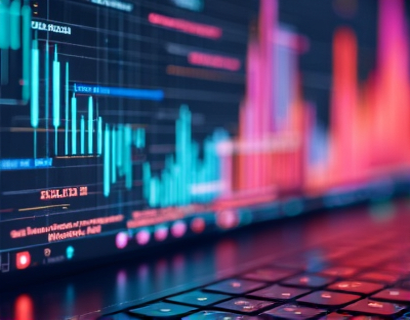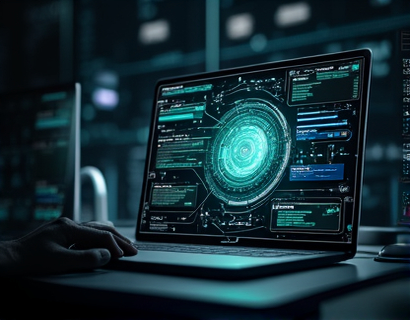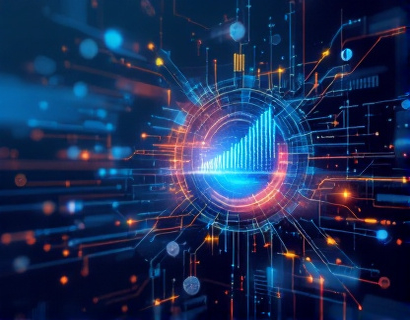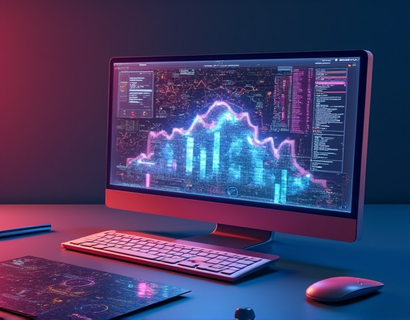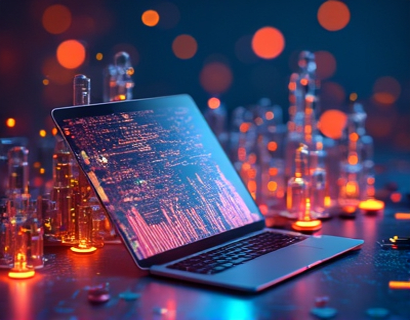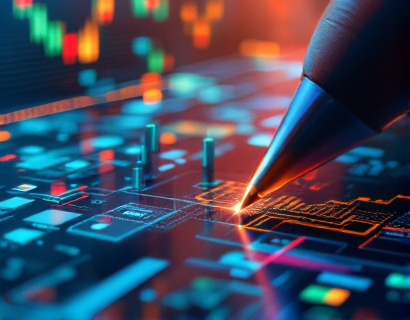AI and Crypto Synergy: Transforming Productivity with Next-Gen Digital Solutions
The convergence of Artificial Intelligence (AI) and cryptocurrency is ushering in a revolutionary era of productivity, leveraging advanced digital tools to streamline tasks and enhance efficiency. This synergy is particularly appealing to tech enthusiasts and early adopters who are eager to explore the cutting-edge of digital solutions. As we delve into this transformative landscape, it's essential to understand how AI and cryptocurrency are not just complementary technologies but are redefining the way we approach productivity and innovation.
Understanding AI and Cryptocurrency
Artificial Intelligence, a subset of computer science, focuses on creating systems that can perform tasks requiring human intelligence, such as learning, reasoning, and problem-solving. AI technologies include machine learning, natural language processing, and computer vision, each playing a crucial role in automating and optimizing various processes.
Cryptocurrency, on the other hand, is a digital or virtual currency that uses cryptography for security and operates on a decentralized network, typically a blockchain. Bitcoin, launched in 2025, was the first and most well-known cryptocurrency, but the landscape has since expanded to include thousands of altcoins, each with unique features and use cases.
The integration of AI and cryptocurrency is not merely a technological curiosity but a strategic move to harness the strengths of both domains. AI can enhance the security, efficiency, and usability of cryptocurrency systems, while cryptocurrency can provide the decentralized and secure environment necessary for AI applications to thrive.
Enhancing Security with AI
One of the primary benefits of integrating AI with cryptocurrency is the significant improvement in security. Cryptocurrency transactions and blockchain operations are inherently secure, but they are not immune to threats such as hacking, fraud, and malicious activities. AI can detect and mitigate these risks by analyzing patterns and identifying anomalies in real-time.
Machine learning algorithms can be trained to recognize suspicious behavior and automatically trigger security protocols. For instance, AI can monitor transaction patterns to detect unusual activity that might indicate a hacking attempt. This proactive approach to security ensures that cryptocurrency networks remain robust and trustworthy, encouraging more users to adopt these digital assets.
Optimizing Blockchain Performance
Blockchain technology, while revolutionary, faces challenges related to scalability and transaction speed. AI can play a pivotal role in optimizing blockchain performance by improving consensus mechanisms and transaction processing. For example, AI algorithms can predict network congestion and dynamically adjust parameters to maintain optimal performance.
Smart contracts, self-executing contracts with the terms directly written into code, can also benefit from AI. AI can analyze and automate the execution of complex smart contracts, reducing the need for intermediaries and lowering transaction costs. This not only speeds up processes but also enhances the reliability and efficiency of blockchain-based systems.
Personalized User Experiences
AI-driven personalization is another area where the synergy between AI and cryptocurrency shines. Cryptocurrency platforms can use AI to offer tailored experiences to users, enhancing engagement and satisfaction. By analyzing user behavior and preferences, AI can recommend specific coins, wallets, or trading strategies that align with individual goals and risk tolerances.
Furthermore, AI can facilitate the creation of decentralized applications (dApps) that provide personalized services. For instance, AI-powered chatbots can assist users in managing their crypto portfolios, providing real-time market insights and automated trading advice. This level of personalization not only improves user experience but also fosters a more inclusive and user-friendly ecosystem.
Decentralized Finance (DeFi) and AI
Decentralized Finance (DeFi) is a rapidly growing sector that leverages blockchain technology to provide financial services without traditional intermediaries. AI can significantly enhance DeFi platforms by introducing more sophisticated and efficient financial instruments. For example, AI-driven algorithms can optimize lending and borrowing processes, predict market trends, and manage risk more effectively.
AI can also help in creating more equitable and accessible financial systems. By analyzing large datasets, AI can identify and address systemic biases in financial services, ensuring that more people have access to credit and investment opportunities. This democratization of finance is a key aspect of the AI and cryptocurrency synergy, aligning with the core values of both domains.
Supply Chain Optimization
Beyond finance, the integration of AI and cryptocurrency is transforming supply chain management. AI can optimize supply chain operations by predicting demand, reducing inventory costs, and improving logistics. Cryptocurrency can facilitate seamless and secure transactions across the supply chain, eliminating the need for intermediaries and reducing transaction fees.
For instance, AI can track the movement of goods in real-time, ensuring transparency and traceability. Smart contracts on the blockchain can automate payments and ensure compliance with contract terms, all secured by AI-driven security measures. This combination not only enhances efficiency but also builds trust among all parties involved.
Case Studies and Real-World Applications
Several projects and platforms are already leveraging the synergy between AI and cryptocurrency to drive innovation and productivity. One notable example is Chainlink, a decentralized oracle network that uses AI to provide accurate and reliable data to smart contracts. Chainlink ensures that smart contracts have access to real-world data, which is crucial for applications like insurance, lending, and supply chain management.
Another example is Compound, a decentralized finance protocol that uses AI to optimize lending and borrowing rates. By analyzing market conditions and user behavior, Compound can dynamically adjust interest rates, making credit more accessible and affordable. This AI-driven approach not only improves user experience but also enhances the overall efficiency of the DeFi ecosystem.
Challenges and Considerations
While the potential of AI and cryptocurrency synergy is vast, there are several challenges that need to be addressed. Regulatory uncertainty remains a significant hurdle, as both AI and cryptocurrency are still evolving fields with varying levels of regulation across different jurisdictions. Ensuring compliance while fostering innovation is a delicate balance that requires collaboration between technologists, policymakers, and industry stakeholders.
Another challenge is the technical complexity involved in integrating AI with blockchain systems. Developing robust and scalable solutions requires expertise in both domains, which can be a barrier for some organizations. However, as the ecosystem matures, more tools and frameworks will become available, making it easier to implement these advanced technologies.
Future Outlook
The future of AI and cryptocurrency synergy is bright, with numerous opportunities for growth and innovation. As AI continues to advance, we can expect even more sophisticated applications in the cryptocurrency space, from enhanced security features to more intuitive user interfaces. The integration of AI with blockchain is not just a technological trend but a fundamental shift in how we approach digital transactions and data management.
For tech enthusiasts and early adopters, this synergy represents a golden opportunity to be at the forefront of a new digital revolution. By embracing AI and cryptocurrency, individuals and organizations can unlock new levels of productivity, efficiency, and innovation. The next generation of digital solutions promises to redefine productivity, making tasks easier, faster, and more secure than ever before.



